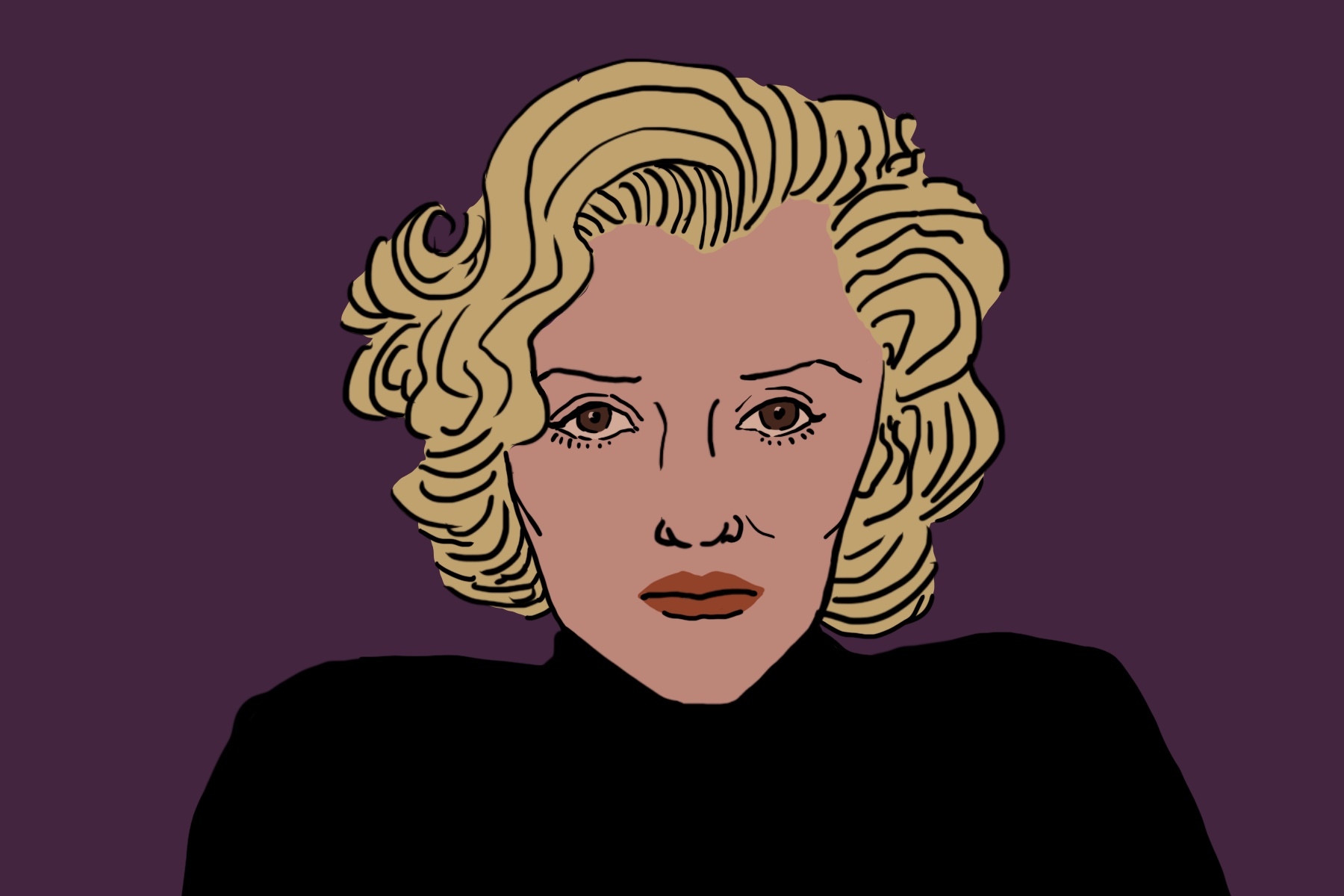Disclaimer: The following article discusses spoilers and sensitive topics from “Blonde,” a film rated NC-17
Netflix’s new original film “Blonde” about Marilyn Monroe — directed by Andrew Dominik and based on the book of the same name by Joyce Carol Oates — is interesting for a few reasons. For one, it is the first Netflix original movie to receive an NC-17 rating, something that is rare in American cinema these days. Second, it may also be Netflix’s last movie to receive this rating because of the film’s almost unanimous condemnation.
“Blonde” has received nothing but criticism from both critics and audiences over its loose attitude toward historical accuracy, its simplified and devalued depiction of Marilyn Monroe and its exploitative use of the film’s sensitive subject matter. It is one of the most controversial films of 2022 so far, and it is not hard to see why.
The film is a fictional retelling of the life of famous movie actress Marilyn Monroe, moving from her troubled childhood to her untimely death. It features an all-star cast with Ana de Armas as Marilyn Monroe, Adrien Brody as Arthur Miller, Bobby Cannavale as Joe DiMaggio and much more. Despite covering the life of Monroe, the story forgoes the standard biopic formula of relaying a person’s life and achievements. Instead, the movie focuses on Monroe’s psyche and the relationship between her personal life and her famous persona.
What can be said with utmost certainty is that the actors are certainly doing a good job. There isn’t a bad performance among the important roles, especially Armas as Monroe. However, their acting skills are stymied by the film’s writing and direction.
Most of the characters are rather one-note, focusing on their most exaggerated traits with little to no variation. These are good actors who have been in excellent productions, but the writing and direction in the film hold them back severely. The characters never feel like real people, but rather caricatures of famous figures from America’s past. Joe DiMaggio is always an uncaring, controlling abuser and nothing else; Arthur Miller is always a tender, sympathetic sweetheart, and nothing else; Marilyn Monroe is … oh, poor Marilyn.
The portrait of Monroe painted by the movie is that of a constantly tortured, ever-crying woman who is doomed for tragedy. Armas is in nearly every scene and each one is a dirge with little to no moments of levity. There is never a moment where the audience could think that Monroe had one moment of happiness in her life. Her depression and issues are not just defining character traits; they are her character.
It’s also a pathetic attempt to portray the real Monroe away from the camera, which is the entire point of the movie, made clear by its tagline: “Watched by all, seen by none.” The real-life actress did suffer from mental and physical health issues: She struggled with substance abuse, was diagnosed with bipolar disorder and also had endometriosis, which was likely responsible for her three miscarriages. However, the film neglects to depict her great intelligence, her friendship with Jane Russell or her highlights as a comedic actress in her many films. What is left to watch is two-and-a-half hours of a celebrity’s worst moments, of which there are many.
To further add to the depressing nature of the film, “Blonde” has primarily drawn up controversy due to its explicit depictions of sexual assault, abuse, forced abortions and suicide. These subjects are rather sensitive and should be handled with care and hold significant weight if used in a story … but they aren’t.
“Blonde” could be described as 166 minutes of pretty pictures that serve to exploit an American icon through dehumanization and violence. The abuse and misery that follows Monroe are nearly constant and leave no permanent effect on the characters or the plot. Monroe begins the story as a hyper-emotional, damaged woman and ends the story as a hyper-emotional, damaged woman. The series of events hold no significant weight or importance in the story, and there’s ultimately no point or reason for their existence.
The film almost delights itself in punishing Monroe for simply existing, and never gives refuge or recognizes her humanity. It makes her line in the film, “I’m not some sort of piece of meat!” all the more futile, because “Blonde” seems to disagree with her plea. No wonder she cries throughout the entire film! She is deprived of any sense of humanity or character growth, a tragedy for both her and the audience watching the series of events, some of which never happened.
That’s right. Many of the events depicted in the film are either exaggerations of real events or completely fictional. Such fabrications include Monroe’s mother attempting to drown her as a child, Monroe being raped on a casting couch, her involvement in a throuple, her forced abortions, her past friend pretending to be her missing father and her abusive affair with President John F. Kennedy to name only a few. It blurs the lines between reality and fantasy, so it’s pretty unclear what really happened and who the real Monroe was, which is the entire point of the movie!
Considering many of these fabricated events don’t have any real impact on the story in terms of character growth or plot significance, one must question their inclusion in the film. It honestly seems as though they were included just to torture, exploit and contort both the image and real-life person who was Marilyn Monroe, while also mocking the general public for taking advantage and reducing the real-life actress to a shadow. You cannot shame the general public for exploiting Monroe while doing the same thing in your film.
There’s also the curious case of the film’s insistence on shifting between color and black and white, as well as randomly changing the aspect ratio. As to why these changes are so persistent, the only real reason seems to be to recreate famous photos or scenes with Monroe in the frame. While visually interesting, it adds nothing to the story being told and looks to be in service of only making pretty pictures, not telling a story. It also adds a further layer of irony to the film’s criticism of the general public for taking advantage of the icon, while purposefully recreating some of her most iconic images for the sake of references with no real message.
One begins to wonder if director Dominik cares for Monroe, and it turns out … no! Despite making the film for about a decade, Dominik has gone on record as not really caring for Monroe, posing the question, “She’s somebody who’s become this huge cultural thing in a whole load of movies that nobody really watches, right?” He’s also gone on record to state that he took more from Oates’ fictionalized book than Monroe’s real life, a shocking fact for a film that aims to portray the real-life Marilyn Monroe.
Of course, there is nothing wrong with an unconventional interpretation of the story of a famous figure, like the 2007 film “I’m Not There,” which depicts moments from Bob Dylan’s life. However, “I’m Not There” has multiple actors playing the same role, shifts time periods and styles based on whoever is playing the main character, and in no way claims to be a look into the real person that was Bob Dylan.
“Blonde” has the same actress playing the same role through a chronological series of events — with the line between real and fake obscured — and claims to be a look into who Marilyn Monroe really was. But it fails not only to separate the person from the image of “Marilyn Monroe,” but perhaps attempts to create a new image for cultural consumption. That new image in question is one of a hyper-emotional and damaged person to be exploited.
“Blonde” is nothing more than a gross, reductive dirge that fails to humanize the real Norma Jeane (Marilyn Monroe) and adds no value to the image she crafted nor offers anything of substance to the viewer. It is easy to see the film like how director Dominik must see Monroe: a depressing, opportunistic tool for exploitation and half-decent images that is overall vapid and meaningless.

















